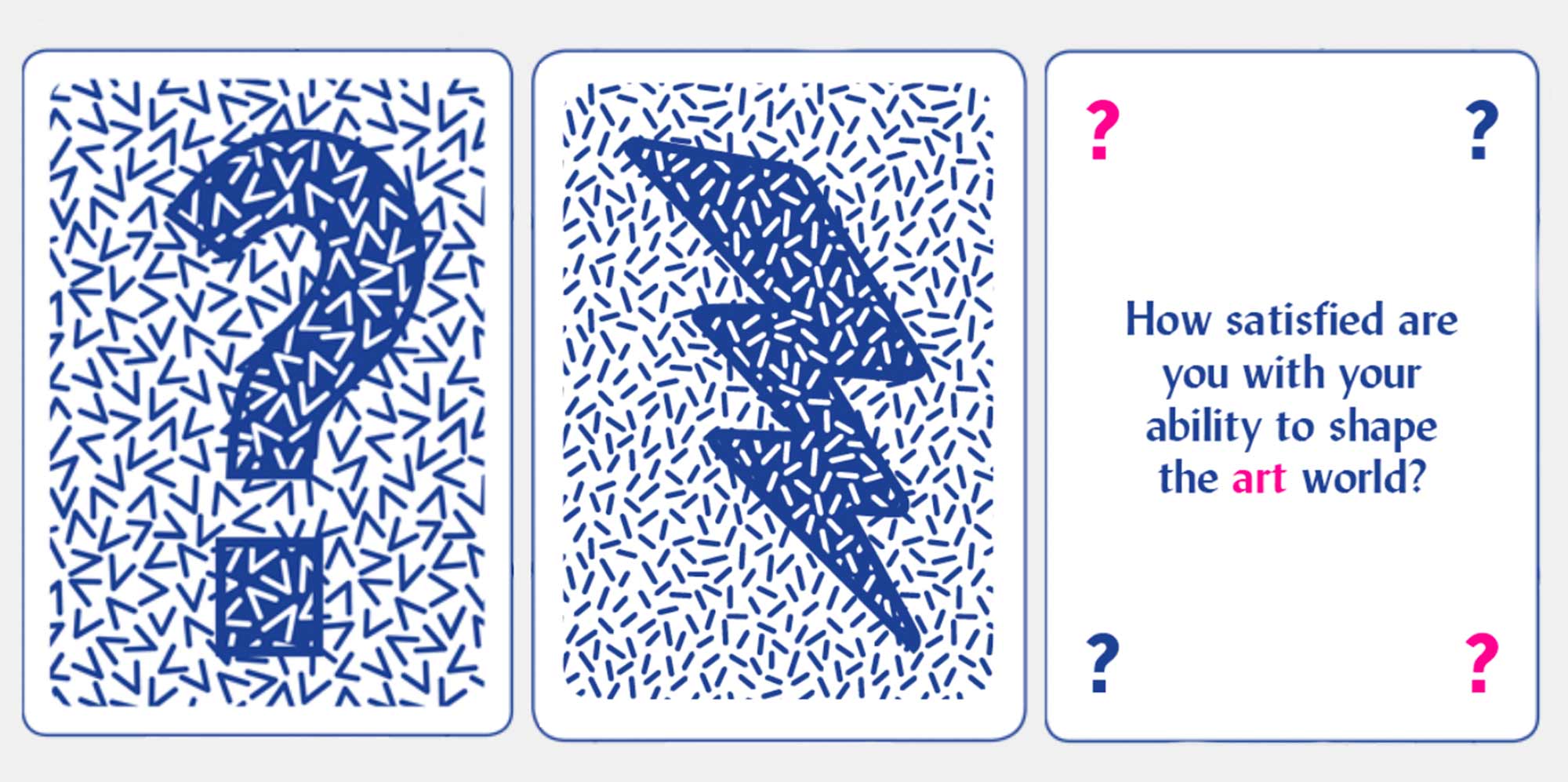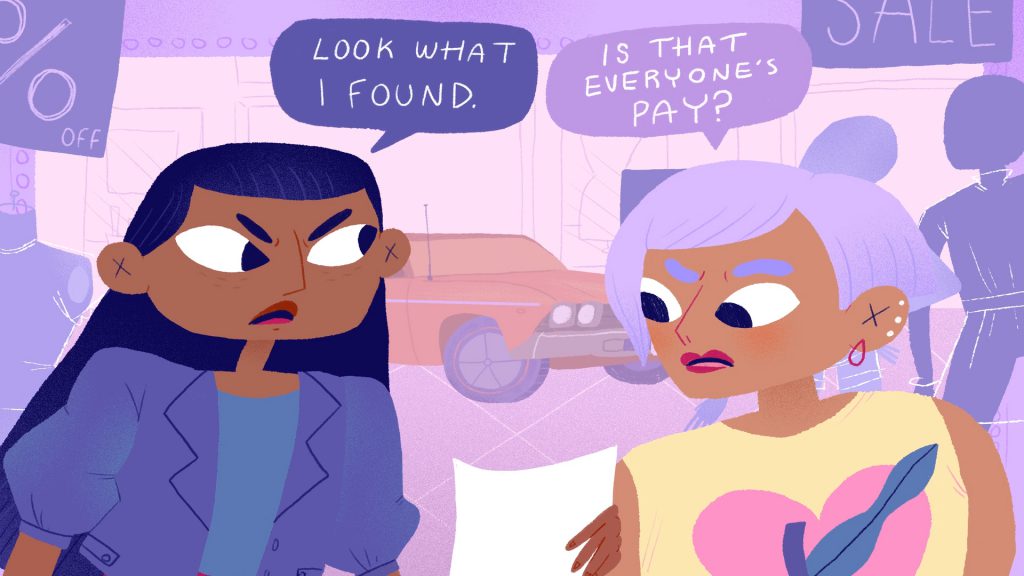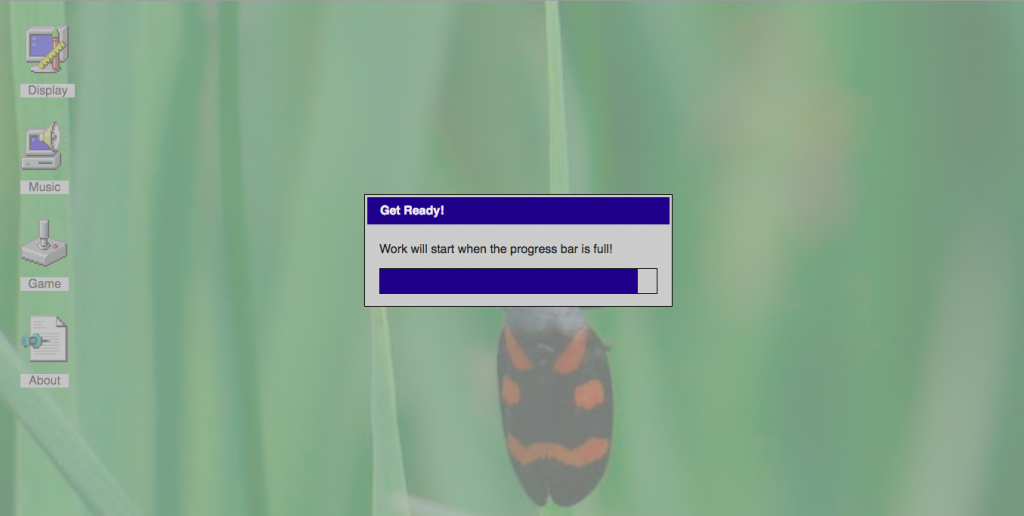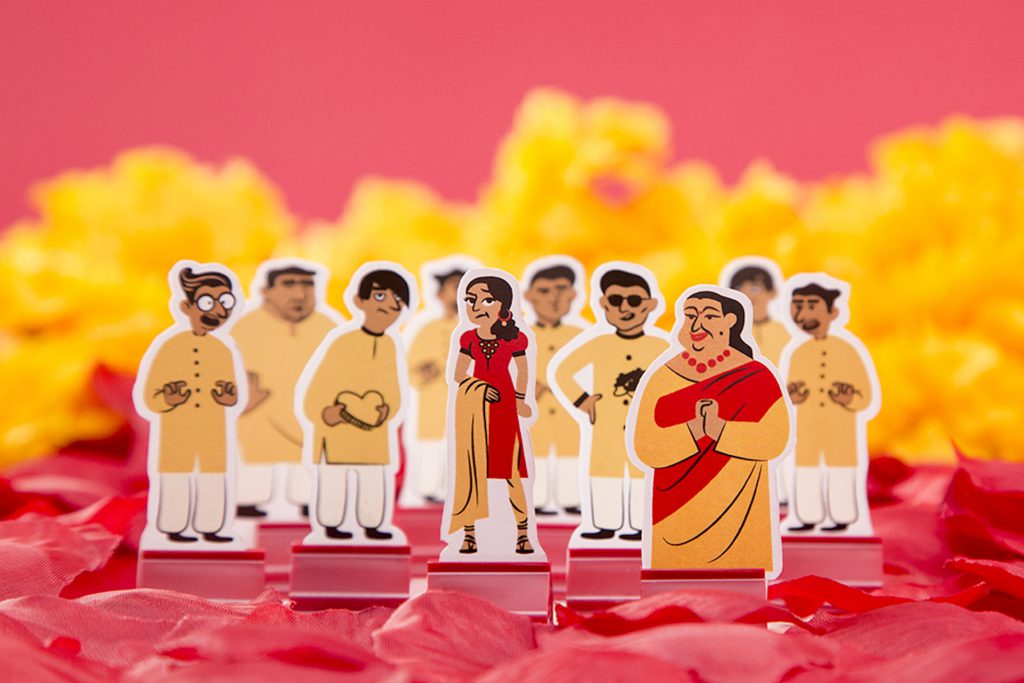Developed by artists Christine Wong Yap and Sarrita Hunn, Inter/de-pend-ence is a non-competitive board game that encourages deep conversation around questions of empowerment and support. Players share how they practice autonomy and relatedness via questions, examples, tactics, and listening. Inter/de-pend-ence emerged from the artists’ shared interests in mutualism, agency, and artists’ roles. Let’s play Round One: Collaboration.
The questions in Inter/de-pend-ence are derived from Yap’s “Artists’ Personal Impacts Survey,” which explored the positive psychological benefits of art practice. We first created the game as a screenprinted edition in 2016, and have included variations on the artists’ survey questions for general audiences as well.
How do we support each other? How and when do we ask for support? How does this empower us to move from competition toward collaboration, from scarcity toward generosity?
Holding space for meaningful conversation requires time, patience, and listening. We believe that with intention, reflection, and interdependence, we can each shape the world we want to participate in.
In conjunction with PlayTime, you can interact with Inter/de-pend-ence in three ways:
— Make your own version: Download the free PDF of Inter/de-pend-ence to print, cut, and play.
— Draw from the online card decks, made with the help of the Peabody Essex Museum.
— Read how four artists played the game. We invited interdisciplinary, socially-engaged artists from around the country to play with us (many had never met each other before). We’re posting transcripts of their gameplay weekly, round by round. This is the first of six entries—you can read Round One below.
How the Game Is Played
In Rounds One through Five, players assume a role and follow these steps:
First, the Answerer (indicated by a question mark on the card) draws a Question Card and responds. The Question Cards are based on a survey Christine conducted to learn how art practices can impacts artists personally and positively; in our game, variations for artists are optional.
Second, the Concretizer (indicated by a cinder block on the card) shares a specific example from their own experience.
Third, the Tactician (indicated by a lightning bolton the card) draws a Tactic Card and uses it as a prompt to give and interpretive response. Tactics cards were inspired by Brian Eno and Peter Schmidts’ Oblique Strategies, a set of cards for breaking creative blocks by encouraging lateral thinking. They are intentionally oblique—there is no right or wrong way to respond.
Fourth, the Summarizer (indicated by a droplet on the card) summarizes the responses from each round.
Between rounds, players switch roles.
In Round Six, players take turns sharing their observations on the gameplay, such as noting common themes or subjective challenges.
Meet the Players
We invited three artists to play the game via video chat one afternoon in December. What follows is the transcription edited for clarity and concision. In addition to our invited players, Sarrita Hunn facilitated the game and Christine Wong-Yap was the fourth player.
Torreya Cummings is a visual artist in Oakland, CA. Her work is project based, and includes installations, photographs, videos, and performances. This work usually relates to notions of time, fiction, and place, and how these narratives shape and are in turn shaped by identity. Cummings also works in a collaboration called Shipping + Receiving, and was a member of the curatorial committee at Southern Exposure (SF) for several years. Cummings large-scale video installation project Notes from “Camp” is on view at the Oakland Museum of California through May 2018.
Malcolm Peacock is an artist and runner living in New Brunswick, New Jersey. His work centers the lived experiences of Black individuals and groups. His work is committed to exploring and expressing his fascination of the potentiality of Black lives in order to question and contemplate who we have been, who we are, and who we may be in the world. Access to arts engagement for people with disabilities is also a major part of his life. He is a 2016 Joan Mitchell Emerging Artist Grant nominee and has received fellowships from Mason Gross School of the Arts, and Skowhegan School of Painting and Sculpture.
Ronny Quevedo has exhibited nationally and internationally at the Queens Museum; The Drawing Center; The Bronx Museum of the Arts; Museum of Fine Arts, Houston; and Emerson Gallery (Germany), among others. Upcoming exhibitions include Pacha, LLacta, Wasichay: Building the Indigenous Present at Whitney Museum of American Art. He is a recipient of the A Blade of Grass Fellowship for Socially Engaged Art and Queens Museum/Jerome Foundation Fellowship for Emerging Artists. He received his MFA from the Yale School of Art in 2013 and BFA from The Cooper Union in 2003.
Round One: Collaboration
Torreya Cummings, Answerer
Torreya draws the Question Card: “In what ways do you collaborate with others/on art projects?”
There are a couple of ways, maybe more … I have a collaborative, collective side project called Shipping + Receiving, which is me and two other people. We usually do one project a year. I think it is more of a true collaboration—versus the other kinds of collaborative work I do—because there’s no originator. It’s mixed up. We have a conversation, and then somebody starts laughing, and then: “Oh, we could do this …” or “Oh, it’d be better if we did this …” If we are all just laughing hysterically, we say: “OK, this is something we actually need to figure out how to do.” We really don’t have defined roles. We work together pretty organically.
The other kind of collaboration I’ll do is if I have a performance project. Then it’s more of a director role. So I ask people if they want to participate, give them an outline, and, usually, give them instructions. Then through following those instructions, things emerge that I couldn’t have planned for. But that is a scenario where it’s my project, and other people are participating in it. I’m setting the stage and letting the action emerge from that.
Otherwise, like with the glove project, I just asked everybody I knew for worn-out work gloves, and then that formed the piece.
Malcolm Peacock, Concretizer
When Torreya mentions giving a general overview or impetus for a project to a bunch of people, that is when you are setting the stage for them to partake in the project or experience. In early June this year, I was in Richmond, Virginia, where I used to live. I went back there to work on a project at the location where I first started making performative or experiential-based works. In revisiting that site, I wanted to work with the people that had given me objects that I carried through the slave show that I had attached to my body. But the second time, instead of having them be implemented in the piece through a physical object, like a stand-in, I really wanted them to have a bigger part, a more integral role in the process, from start to finish. I presented them with a project I wanted to make about liberation, through looking at the Gabriel Prosser Rebellion, the largest failed rebellion in the South that ended in his and thirty-six other people’s deaths. What ended up happening was that there was much more openness in the project. It wasn’t so confined to: “You must give me an object that means X, Y, Z to you.” It was more: “Can you describe the most liberating experiences you have had while living in Richmond, Virginia?” That left the project way more open, with everyone understanding they could overrule consensus or the impetus of the work. My role became more like “organizer,” losing a little of a role of “director,” and integrating everyone at the same level.
Ronny Quevedo, Tactician
Ronny draws the Tactics Card, “Make it more positive.”
I’m thinking about making collaboration more positive … and I don’t know how effective that would actually be—because I feel like if you’re trying to make something more positive, at some moment it was negative, or you’re not happy with it. So positivity, in certain cases, is really projections of what people find to be positive. … Collaboration can sometimes deal with really serious contexts, and sometimes it’s not necessarily about creating a positive space, but how to discuss ideas.
Christine Wong Yap, Summarizer
Torreya had three examples that you could see as three levels of collaboration. One is clear, a “true” collaboration. She talked about how if you’re doing an idea and you’re laughing a lot, that’s one way you know you’re on the right path. Then there’s another type of collaboration, where you’re the director, and you invite people to do something that is your own art project—you have authorship. But then in giving them instructions, sometimes they improvise and new things can emerge. And then there is another way of collaborating, where the contributions are more minimal. The participants give their gloves and then Torreya transforms them into a different kind of sculpture, so the interaction is fairly limited.
Malcolm gave an example which spoke to the three layers, and he talked about moving from a lower tier of, “You give me this contribution,” to a more open-ended and dynamic tier. His example was a site-specific project located at the largest failed slave rebellion in Virginia. He ultimately ended up asking people to talk about liberation. So rather than just reflecting on something and then handing over an object, there was more open-ended dialogue.
Ronny’s tactic was, “Make it more positive.” But he was saying that’s kind of a weird question, because it assumes that it’s not positive enough to begin with, or is somehow lacking. I think all these examples are pretty positive already, so maybe that’s a reason why it’s hard to make it more positive.
Inter/De-pen-dence game play, Round Two: Meaning will post next week—come back and play along!












